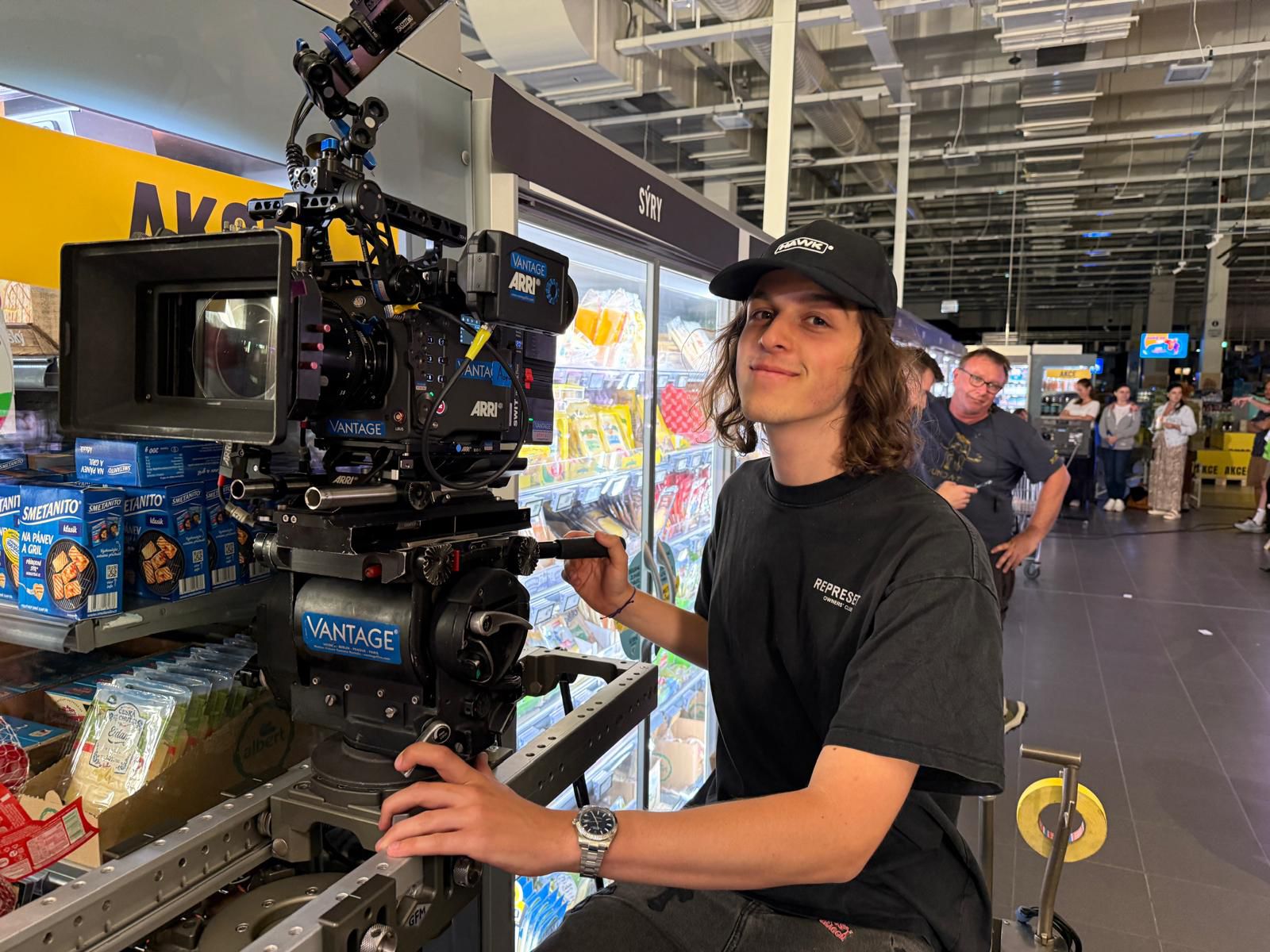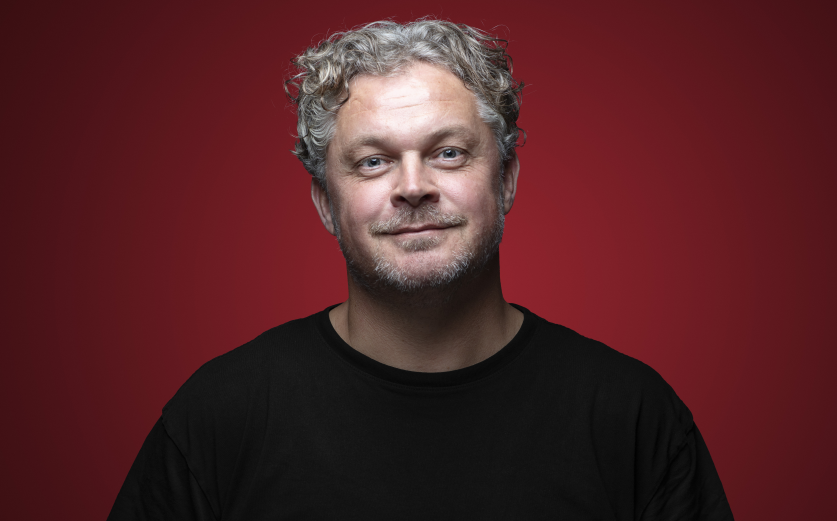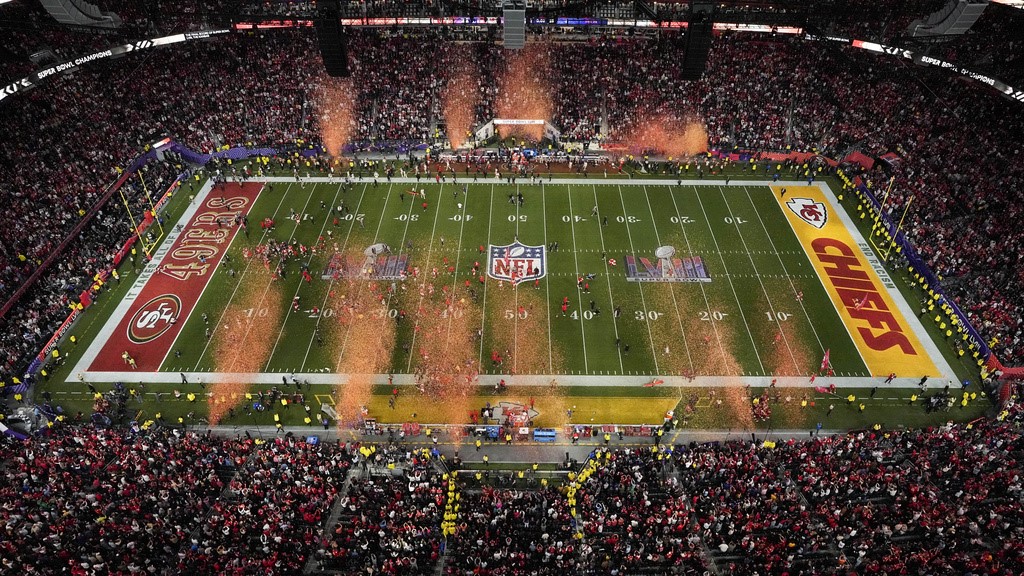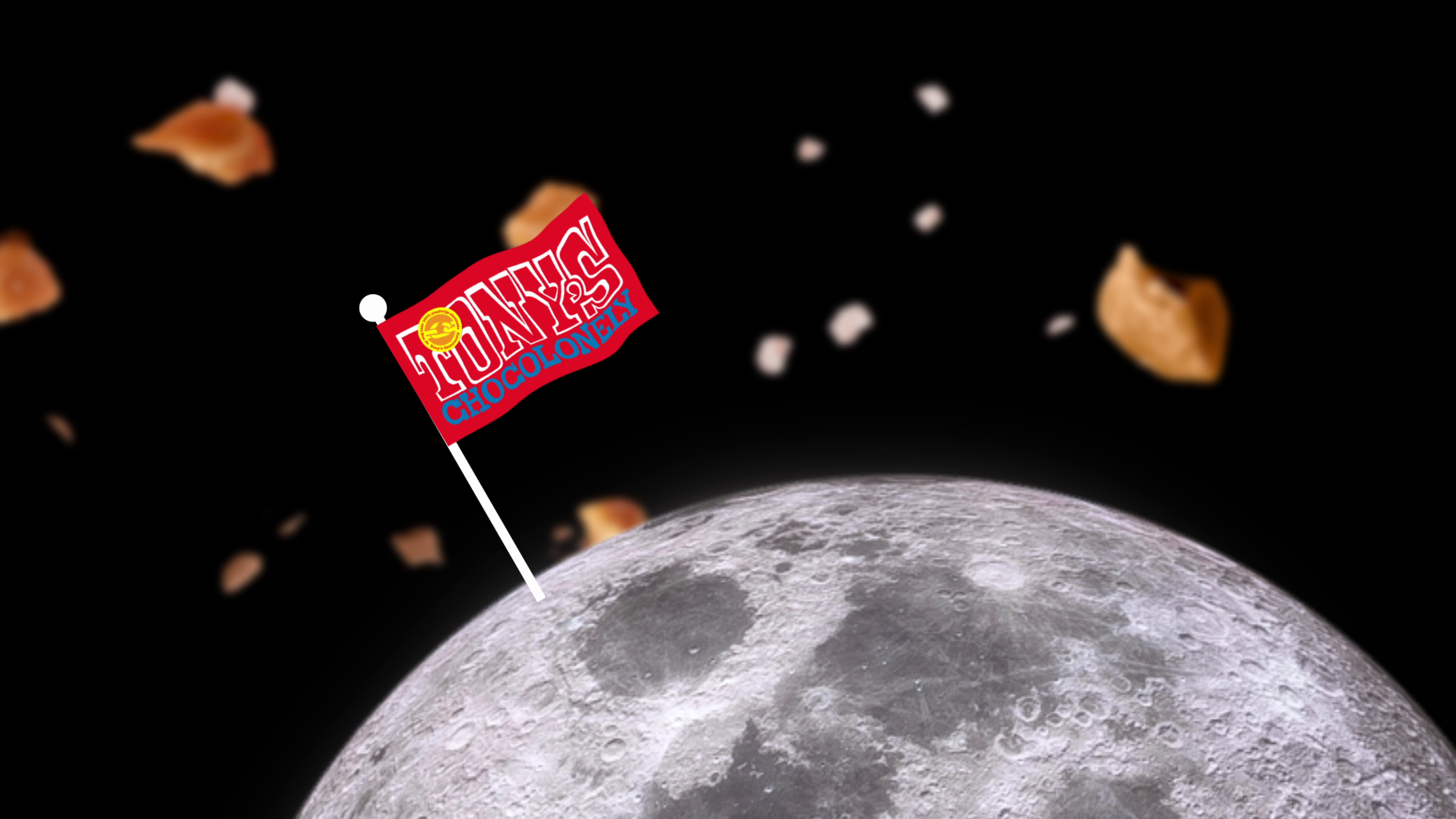Food and drink branding has long been dominated by familiar cliché swirling liquids, shiny pack shots, and generic visuals that blur brands together. Chuck Studios, an Amsterdam-born creative and production agency, set out to change that.
Founded by a director and producer duo, the studio combines high-level craft with deep brand strategy, specialising exclusively in food and beverage. Their signature innovation, the Culinary Identity, gives brands a distinctive visual language rooted in product truth and culture making them instantly recognisable across campaigns and markets.
From working with global giants like Miller Genuine Draft, Lipton, and Tony’s Chocolonely, Chuck Studios has proven that specialising pays off. Their hands-on, in-house creative process brings together production expertise, cultural curiosity, and a dedication to craft that sets them apart from traditional agencies. In this interview, the team shares their journey, challenges, and vision for the future of food branding where distinctiveness and authenticity matter more than ever.
How was your company born and where are you based?
Our company was born in our bathtub in Amsterdam. With my background as director and Ellen’s experience in production, we decided to combine our talents and launch a production company for product images together. While many warned us against mixing marriage with business, it turned out to be our greatest strength. Our partnership fuels our creativity and collaboration every day.

What was the biggest challenge to the growth of your company?
One of our biggest growth challenges was transforming Culinary Identities (CI) from a conceptual idea into a tangible consultancy service. The idea for CI emerged during the early days of COVID, which was a surprising window for reflection and innovation, as production had temporarily slowed. After directing hundreds of commercials, I found myself repeating similar shots over and over for different brands. They were leaning on industry norms instead of finding ways to distinguish themselves visually. That realisation sparked my drive to help brands break the mould. The real challenge was turning that insight into a structured, actionable service and building a team that believed in its potential.
Which was the first huge success that you can remember?
The first Culinary Identity for a global brand was for Miller Genuine Draft (Molson Coors). It marked a breakthrough, unlocking many other global brand partnerships.
Miller was stuck in a category dominated by generic beer visuals of liquid swirling, looking refreshing but lacking brand distinctiveness. We redefined that by tapping into Miller’s DNA and its audience. Inspired by the bass-driven music its drinkers love, we discovered that sound waves could visibly ripple through beer. By syncing these patterns to the music’s BPM using real sound, real beer, and no CGI, we created a visually striking, crave-worthy identity rooted in analogue physics.
To match this energy in pack shots, our SFX team built tech that made bottles dance to the beat. We also developed a global playbook outlining how Miller should always look in its brand assets to ensure consistency across markets, from bottles never appearing alone and caps always being off, to condensation on the bottle being just right.
What’s the biggest opportunity for you and your company in the next year?
We expect AI to unlock massive new opportunities, but also to flood the market with sameness, which is exactly what Culinary Identities are designed to counter. Sure, it’s exciting to create assets at scale, but if they don’t reflect your unique visual language or feel truly yours, it’s a pointless exercise. A Culinary Identity solves that by making your brand instantly recognisable, even at high volume.
Can you explain your team’s creative process? What makes it unique?
Our creative process is deeply collaborative and truly unique because everything happens in-house. We bring together a rare combination of hyper-specialism, high-level craft, brand understanding and production expertise, all under one roof. This setup goes against the industry norm, where these elements are often siloed or outsourced.
What makes our process special is that our team doesn’t just sit around a table brainstorming; they get hands-on. Because all the creativity and talent is in-house, we’re able to explore, shoot, test and experiment with your actual food during the ideation phase. It creates a dynamic feedback loop between concept and execution that leads to stronger, more refined ideas.
We also encourage the team to step outside the studio and explore culture, observe people and absorb inspiration from the world around them. We believe the best ideas don’t come from within the Chuck Studios building, they’re sparked by real experiences. Culture. That curiosity and freedom to explore is at the heart of how we create.
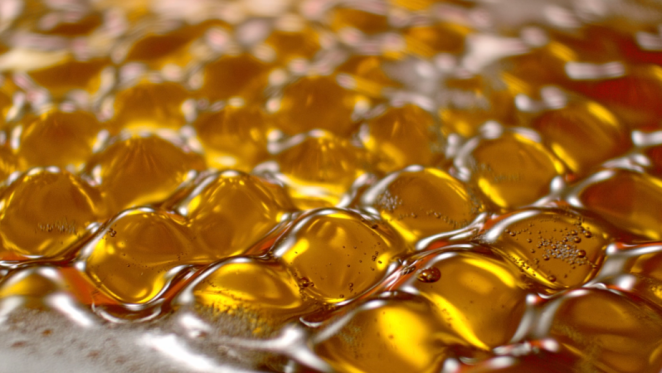
How does your team remain inspired and motivated?
Our team stays inspired and motivated through a strong sense of community and a shared passion for this field. We regularly attend events to meet new people, exchange ideas and stay plugged into what’s happening in the world around us.
Inside the studio, we nurture a culture of togetherness and innovation. We host lunch and learns, dinners, parties and informal knowledge-sharing sessions that keep everyone evolving and inspired. One of our most cherished traditions is our big family-style lunches at the table in our offices. As our team has grown, so has the communal table. We’ve made sure it keeps expanding so that everyone can still gather, eat and connect like we always have.
It’s this balance of exploration outside and community inside that keeps our team energised and creatively driven.
How has COVID-19 affected your company?
After the initial shock of COVID-19, it created an unexpected opportunity for us. With production slowing down, we were able to fully focus on developing the Culinary Identity product, delivering many video presentations and refining the offering.
The Netherlands was quick to introduce regulations allowing production companies like ours to continue working safely. This meant brands could still produce content through our studios, which helped keep momentum going locally.
However, we did experience a setback in our U.S. business. The slowdown there affected the natural flow of work and made it harder to maintain relationships that usually grow through ongoing collaboration. That said, we stayed in close contact with partners and used the time to strengthen our foundation for the future.
Which agencies do you gain inspiration from? Do you have any heroes in the industry?
Many creative agencies focus more on campaigns than on brand, driven by short-term KPIs and award potential rather than long-term brand value. Of course, there are exceptions. We draw a lot of inspiration from design agencies such as Turner Duckworth, DesignBridge, Landor and JKR, and from creative agencies like Wieden+Kennedy and Mother, who consistently ground their work in strong strategic thinking, as opposed to shiny new things.
What is one tip that you would give to other agencies looking to grow?
Specialise, specialise, specialise.
In our experience, expertise sets you apart. For example, our Liquids Specialist, Erik de Koning, has spent over a decade mastering high-speed liquid photography and film and now knows every nuance of it (check out Erik’s liquid reel). Our in-house SFX department is another area of specialisation that many companies outsource, whereas we’ve invested in building a custom library of rigs, designed and refined by Willem van Muijden, Special Effects Supervisor, that can be adapted for a wide range of creative needs. See our SFX reel.
That said, the decision to part ways with non-food clients and focus exclusively on food and drinks turned us into true specialists. It was the best move we could have made: it sharpens every decision we make and gives us total clarity on who our clients are, and who they’re not.
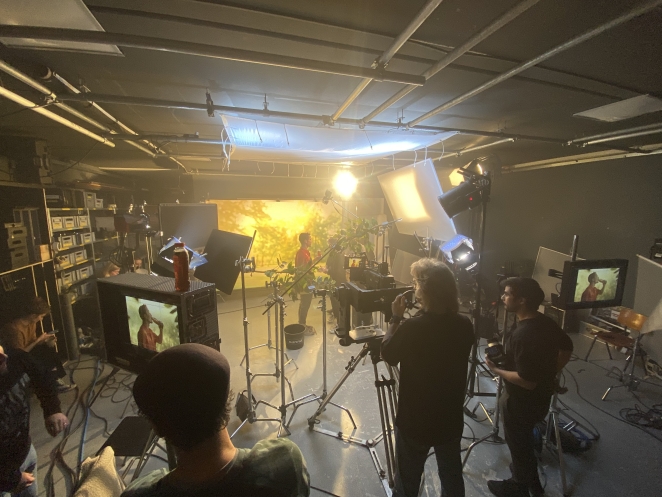
How do you go about finding new clients/business? (Pitching, work with retainers, etc.)
By staying highly visible and actively engaged in the industry. That means being consistently present on social media, attending key industry events and organising our own events to connect with old, new and prospective clients in meaningful ways.
We also put a lot of effort into crafting standout presentations that showcase not just our work, but our thinking and expertise. Being kind, knowledgeable and easy to find goes a long way when relationships are at the heart of what we do, and we aim to stay top of mind for the right reasons. We also work with a PR agency that helps us connect with editors, platforms, conferences and other key stages all aimed at building our brand within the specific circles that matter to us.
What’s your one big hope for the future of the industry?
That marketers move away from short-term KPIs and the seductive clarity of performance marketing. We now know from marketing science how brand building really works. It’s time for food and drink brands to embrace that and take it to its highest level. There are huge opportunities there that are still being overlooked.
Can you share a defining moment in your company’s journey that shaped its identity or direction?
A defining moment in our company’s journey was when we made the strategic decision to focus exclusively on food and drinks. This shift allowed us to refine our identity, streamline operations and become true super specialists in our field. Another pivotal milestone was creating our concept of Culinary Identities for food and beverage brands looking to find distinctiveness within their category. It gave us a unique edge in the market and solidified our role as a creative partner for brands struggling to stand out.
How do you foster a culture of innovation and experimentation within your team?
By creating space for it in mindset and in practice. We actively encourage spec work and innovation projects, giving our team the time, tools and support they need to explore new ideas and discover their own specialisms. Obviously, AI is part of this.
It’s not just top-down; our whole team is invested in the spirit of innovation. It’s part of our culture to question, explore and evolve.
What measures do you take to ensure diversity and inclusion are prioritised within your company?
Diversity and Inclusivity are a hygiene factor for us. As a company with both a male and female founder, we’re committed to creating a safe, respectful and welcoming environment for everyone, regardless of background, beliefs, or identity. We actively promote equal opportunities for all employees, applicants and suppliers. We deeply believe diversity makes not just our culture thrive – it also simply makes the work better. Our team (10+ nationalities!) is as global as our client portfolio.
Can you describe a project that challenged your team creatively and how you overcame any obstacles?
The work we did for Lipton Ice Tea was anything but simple. We created a bespoke consumption sequence and a new consumer ritual. Pepsi-Lipton is a joint venture between PepsiCo and Unilever, two of the world’s largest food and beverage giants. Despite a roster of agencies and consultants involved, we succeeded in getting our work integrated into global campaigns, something we’re incredibly proud of. You can check out the case study.
What strategies do you employ to adapt to changes and trends in the industry while staying true to your company’s values?
We maintain an honest and open culture where we believe in being straightforward with each other. To do so, we organise positive feedback sessions where we coach one another and monthly meetings where we share professional challenges we’re navigating. By maintaining an open door policy for feedback and communication, we can adapt quickly as a team when changes or challenges arise.
Can you share a memorable client success story that exemplifies your company’s approach and impact?
Teaming up with the impact-driven chocolate brand, Tony’s Chocolonely, was a textbook case of how a culinary identity can celebrate both product and brand, in this case – its chunkiness, charm and commitment to change.
When Tony’s Chocolonely decided it was time to start talking about taste, they didn’t just want a pretty picture of chocolate; they wanted a revolution in how it was seen, felt and craved. We were tasked with crafting a visual identity as bold as Tony’s mission to end slavery in the cocoa industry and that was synonymous with the brand’s DNA. We had to find something that was both a symbol of its defiance and deliciousness.
The result was a distinctive new culinary identity anchored by an unlikely hero: a chunky top-right square of chocolate affectionately named Neil. We leaned into Neil as an icon and gave Tony’s Chocolonely’s chunky bars the spotlight they deserve. You can check out our work for Tony’s Chocolonely.
In what ways do you invest in the professional development and growth of your team members?
We regularly send young employees to industry training programs. Selected team members have completed mini-MBAs to deepen their understanding of the business, and we facilitate that with pride. As a craft company, we also invest heavily in technology. Recently, we acquired a motorised robot arm to enable precise, repeatable camera moves. It’s an investment that requires intense training. Four of our team members have completed that training, and we’re proud of it. It’s how we stay sharp, on the front line of innovation and creative excellence.
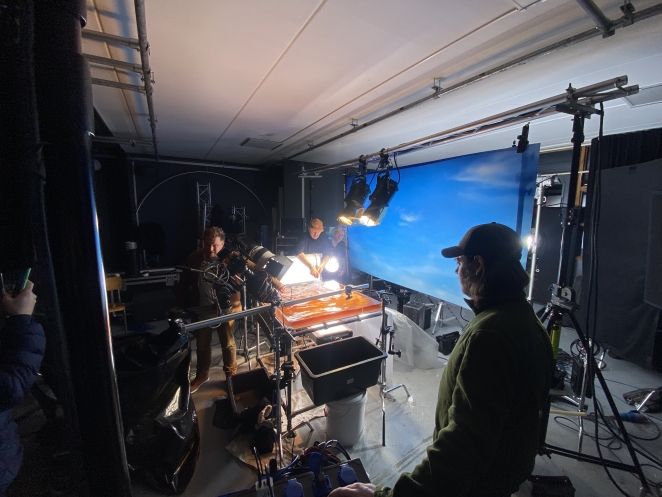
How do you approach sustainability and ethical practices within your company’s operations and projects?
At Chuck Studios, sustainability and ethical practices are deeply woven into the fabric of how we operate, both in our day-to-day work and our long-term vision.
On the production side, we’ve made significant investments in eco-conscious technology and practices. We’ve banned energy-inefficient lighting like Tungsten and HMI, opting instead for LED alternatives. We recycle set walls and panels until they break, use biodegradable paint and buy props locally to reduce environmental impact. Plastic water bottles are long gone from our sets.
We also take pride in offering a vegetarian lunch every day. It’s healthier, more sustainable and a great way for the team to explore new flavours and recipes together. We’re equally conscious about waste reduction, separating all recyclables and replacing coffee capsules with a bean-to-cup machine.
Any excess food from shoots is donated to the Rainbow Group, supporting those in social and economic need. It’s a small gesture with a big impact.
When it comes to transportation, most of our team commutes by bike or public transport. Our Chuck Van is used for production needs and we offset all related CO₂ emissions from both the van and air travel through the Trees for All initiative.
Finally, we believe in giving back. Whether it’s cleaning plastic from the Amsterdam canals or supporting the Dutch Food Banks, we regularly organise team charity initiatives that make a real difference.
Being sustainable and ethical isn’t a trend, it’s a responsibility we take to heart.
Can you discuss a time when your company had to pivot or innovate in response to unforeseen challenges, and what lessons did you learn from that experience?
When COVID hit, we had to reinvent ourselves. Shooting was prohibited almost overnight, but we quickly found alternative ways to keep going. Our region was among the first to reopen for production, under strict conditions and with skeleton crews. We delivered the same premium quality our clients expect, but with fewer people and more time. Essentially, we traded crew size for time, adjusting our process to maintain standards. That experience taught us we could rethink our approach entirely and still get great results. Even now, we sometimes ask: what would we have done if this were a COVID-era job? It often leads to fresh, practical solutions.
Do you have any websites, books or resources that you would recommend?
A big part of our strength lies in combining hands-on image making with a deep understanding of marketing, brand building, and how brands actually grow. Here’s a list of books, papers, and podcasts that everyone in our industry should familiarise themselves with, but probably hasn’t.
Byron Sharp – How Brands Grow
Binet and Field – The Long and the Short of It
System1 – Compound Creativity
Daniel Kahneman – Thinking Fast and Slow
Jenni Romanyuk -Distinctive Brand Assets
Uncensored CMO Podcast
On Strategy Showcase
Mark Ritson’s work.


